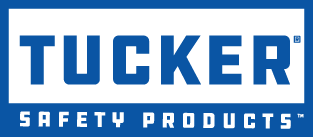PPE Requirements – OSHA
Personal Protective Equipment
Hazards exist in every foodservice operation in many different forms: hot liquids, grease, steam, hot surfaces, sharp objects/edges, falling objects, cleaning chemicals, and a myriad of other potentially dangerous situations. Controlling hazards at the source is the best way to protect workers; however, when engineering, work practice and administrative controls are not feasible or do not provide sufficient protection, employers must provide personal protective equipment (PPE).
Personal protective equipment, commonly referred to as “PPE”, is equipment worn to minimize exposure to a variety of hazards. PPE in foodservice includes such items as gloves (heat resistant, chemical resistant, cut resistant, etc.), aprons, foot, and face/eye protection.
Personal protective equipment, or PPE, is designed to protect workers from serious workplace injuries or illnesses resulting from contact with chemical, radiological, physical, electrical, mechanical, or other workplace hazards. Protective equipment includes a variety of devices and garments to provide protection against hazards in the workplace.
Employer Responsibilities
OSHA’s primary personal protective equipment standards are in Title 29 of the Code of Federal Regulations (CFR), Part 1910 Subpart I, and equivalent regulations in states with OSHA-approved state plans, but you can find protective equipment requirements elsewhere in the General Industry Standards. OSHA’s general personal protective equipment requirements mandate that employers conduct a hazard assessment of their workplaces to determine what hazards are present that require the use of protective equipment, provide workers with appropriate protective equipment, and require them to use and maintain it in sanitary and reliable condition.
Using personal protective equipment is often essential, but it is generally the last line of defense after engineering controls, work practices, and administrative controls. Engineering controls involve physically changing a machine or work environment. Administrative controls involve changing how or when workers do their jobs, such as scheduling work and rotat- ing workers to reduce exposures. Work practices involve training workers how to perform tasks in ways that reduce their exposure to workplace hazards.
Employers must assess the workplace to determine if hazards are present that require the use of personal protective equipment. If such hazards are present, the employer must select protective equipment and require workers to use it, communicate protective equipment selection decisions to workers, and select personal protective equipment that properly fits workers.
OSHA wants workers to fully understand their use of PPE. Employers must also train workers who are required to wear personal protective equipment on how to do the following:
- Use protective equipment properly.
- Be aware of when personal protective equipment is necessary.
- Know what kind of protective equipment is necessary.
- Understand the limitations of personal protective equipment in protecting workers from injury.
- Put on, adjust, wear, and take off personal protective equipment.
- Maintain protective equipment properly.
- Disposal of PPE past its useful life.
Eye and Face Protection
Workers must use appropriate eye or face protection when exposed to hazards from flying particles, molten metal, liquid chemicals, acids or caustic liquids, chemical gases or vapors, or potentially damaging light radiation.
Hand Protection
Workers are required to use appropriate hand protection when hazards are encountered that could result in the absorption of harmful substances through the skin, severe cuts or lacerations, severe abrasion, punctures, chemical bums, thermal burns, or injuries caused by temperature extremes.
For hand protection, there is no ANSI standard for gloves but OSHA recommends selection be based upon the tasks performed and the performance and construction characteristics of the glove material. For protection against chemicals, glove selection is based on the chemicals encountered, the chemical resistance and the physical properties of the glove material.
